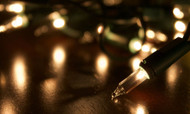History Behind Christmas Lights
17th Dec 2019
Today, we put up Christmas lights everywhere, from the front yard to the walls of our businesses. Strings of lights are even common at Halloween and Valentine’s day. You can scarcely imagine holiday decorations without them, and even the mere sight of lights connected with a wire brings up thoughts of snow, presents, good food, and family. But where did this all start? To get a full view of the history behind Christmas lights, we must go back quite far.
Christmas Trees
Sometime in the 1600s, Christians in Germany adopted the pagan practices of placing evergreen trees in their homes and lighting candles during winter. As Germans immigrated to the US in the 1800s, they brought with them the idea of decorating trees for Christmas, which quickly spread throughout America.
It’s hard to say who was first, but it’s certain that lighting Christmas trees with candles was popularized when President Franklin Pierce had the White House tree embellished in this way in 1856. While everyone appreciated the magical sight and sought to replicate it in their own houses, there were two major problems with the practice. First, candles were hard to keep attached to trees. Second, putting dozens of open flames right on a highly-flammable tree was not the safest thing to do.
Lightbulbs
Enter famous innovator Thomas Edison and his business partner Edward Hibberd Johnson. Not too long before Pierce put up the lighted Christmas tree, Edison had patented the lightbulb in 1880. But with the harnessing of electricity for appliances still a new concept, its likelihood of commercial success was not clear. Johnson, who promoted many of Edison’s inventions, had an idea.
Taking cues from the candle-covered trees, Johnson got work wiring together a long string of red, white, and blue lightbulbs. He then wrapped them around his Christmas tree and displayed it in his parlor window so that people could see it from the street. He even put it on top of a revolving base to up the wow factor and had a reporter write about in the newspaper. The whole arrangement was powered by an electric generator and showed off how lightbulbs could be used in various ways.
In 1895, President Grover Cleveland had his White House Christmas tree decorated with lightbulbs. Still, electric lights weren’t cheap at the time, and it wouldn’t be until the early 1900s that they took off. When they did, though, they truly took over.
Ultimately, Johnson’s idea worked and became ingrained in the festive traditions of people across the country. They expanded in style to include mini light strings, lighted snowflakes, and marquee lights covering letter displays. No longer limited to trees, Christmas lights now symbolize the season as a whole.


